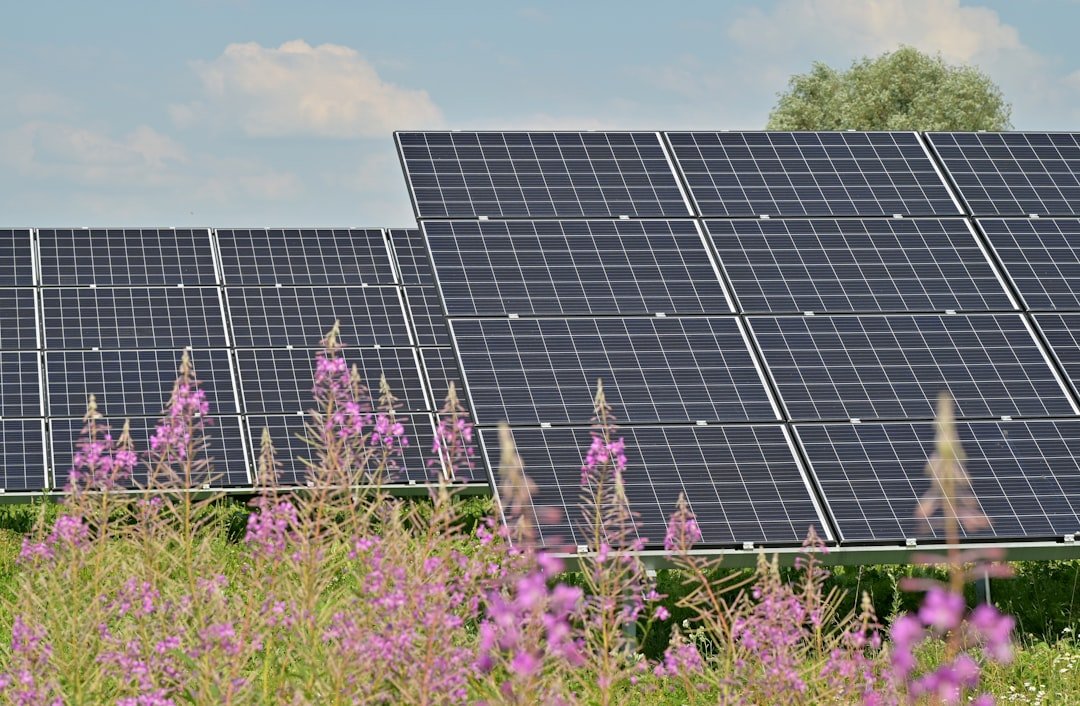Renewable Energy Sources: A Complete Overview The transition to renewable energy sources is more important than ever as the globe struggles with the urgent issues of climate change and the depletion of fossil fuels. The different types of renewable energy that are currently available and how they can support a sustainable future may be questions on your mind. Eight major renewable energy sources will be discussed in this article: geothermal energy, biomass energy, tidal energy, wave energy, wind energy, solar energy, hydroelectric power, and sustainable biofuels. Using photovoltaic cells or solar thermal systems, solar power captures the energy of the sun.
Key Takeaways
- Solar power is a renewable energy source that harnesses the sun’s energy to generate electricity, making it a clean and sustainable option for power generation.
- Wind power utilizes the kinetic energy of the wind to produce electricity, offering a reliable and environmentally friendly alternative to traditional fossil fuels.
- Hydroelectric power generates electricity by harnessing the energy of flowing water, providing a consistent and efficient source of renewable energy.
- Geothermal energy taps into the Earth’s natural heat to produce electricity and heat buildings, offering a reliable and sustainable energy source with minimal environmental impact.
- Biomass energy utilizes organic materials such as wood, agricultural residues, and waste to produce heat and electricity, providing a renewable and carbon-neutral energy option.
One of the most plentiful resources on Earth is solar energy, which may surprise you. An entire year’s worth of energy needs can be met by the sun’s hourly emissions. You can drastically lower your carbon footprint by turning sunlight into electricity by putting solar panels on your roof or in solar farms.
In the last few years, solar power technology has rapidly advanced. Solar panels are becoming more accessible to a wider range of people due to their increasing affordability and efficiency, as you may have noticed. A growing number of businesses and homeowners are considering solar energy as a feasible option due to government incentives and falling installation costs. You can also combine solar power systems with battery storage devices to store extra energy for use at night or on overcast days.
Potential Worldwide. Wind energy has enormous potential; by 2030, it may even account for as much as 20% of global electricity consumption. Wind farms, both on & off shore.
| Solution | Energy Source | Advantages | Disadvantages |
|---|---|---|---|
| Solar Panels | Sunlight | Renewable, low maintenance, reduces electricity bills | High initial cost, weather dependent |
| Wind Turbines | Wind | Renewable, no emissions, low operating costs | Visual impact, noise, bird and bat collisions |
| Hydropower | Water flow | Renewable, reliable, low operating costs | Environmental impact, limited locations |
| Biomass Energy | Organic materials | Renewable, reduces waste, carbon neutral | Air pollution, deforestation, competition with food crops |
| Geothermal Energy | Heat from the earth | Renewable, low emissions, constant source | High upfront costs, limited locations |
It may interest you to know that wind farms can be found both offshore & onshore. Because offshore wind farms typically capture stronger and more reliable winds, they are especially useful for producing energy on a large scale. Larger and more effective turbines that can produce even more electricity are anticipated as technology advances. advantages for the environment. Also, wind power is a desirable alternative for people wishing to lessen their ecological footprint because it has a lower environmental impact than conventional energy sources.
One of the most well-known and traditional types of renewable energy is hydroelectric power. Without releasing greenhouse gases, you can produce electricity by using the water flow that is captured by dams or rivers. You may have seen massive dams like China’s Three Gorges Dam or the Hoover Dam, which are excellent illustrations of large-scale hydroelectric power generation. Despite being incredibly dependable and efficient, hydroelectric power has drawbacks.
Dam construction has the potential to uproot communities and disturb regional ecosystems. Nonetheless, small-scale hydroelectric projects are becoming more well-liked as a more environmentally friendly substitute. These initiatives can supply clean energy to isolated locations without access to conventional power grids and frequently have a smaller environmental impact.
Hydroelectric power continues to be a key component of the renewable energy landscape when thinking about the future of energy production. Geothermal energy produces electricity and direct heating by drawing on the heat that exists within the Earth. This energy source has been around for centuries; ancient civilizations used hot springs for cooking & bathing, which may surprise you. Geothermal power plants, which provide a steady & dependable energy source, now turn hot water or steam from subterranean reservoirs into electricity.
Geothermal energy’s minimal impact on the environment is one of its many noteworthy benefits. Geothermal plants emit fewer greenhouse gases than fossil fuels. Geothermal resources can also be used around-the-clock, which makes them a reliable baseload power source.
Geothermal energy is location-dependent, though, and works best in areas with tectonic plate boundaries or high volcanic activity. Increased research into enhanced geothermal systems (EGS) may be observed as technology develops; this could broaden the application of geothermal energy beyond conventional hotspots. Biomass energy is produced from organic materials, including animal dung, plant matter, & agricultural waste.
It may interest you to learn that biomass has been used as fuel and heat for thousands of years. In place of fossil fuels, biomass can now be burned directly to generate electricity or transformed into biofuels. Utilizing waste materials that would otherwise end up in landfills is one of the main advantages of biomass energy. You can produce electricity & lessen waste by turning these materials into energy. But the sustainability of biomass production must be taken into account; overharvesting or unsustainable farming methods can result in habitat loss and deforestation. Prioritizing sustainable practices is essential when investigating biomass as an energy source in order to ensure long-term viability.
Tidal energy uses the sun’s and moon’s gravitational pull on Earth’s oceans to create electricity. In coastal areas, you might have seen barrages or tidal turbines to harness this energy as the tides rise and fall. In contrast to other renewable energy sources like wind or solar, tidal energy is very predictable, which makes it a desirable choice for dependable power generation. Although tidal energy has a lot of promise, there are drawbacks, such as high upfront costs and environmental effects.
The installation of tidal barrages may have an adverse effect on marine life & local ecosystems. But technological developments are producing greener alternatives, like underwater turbines that reduce disturbance while efficiently harnessing tidal energy. In terms of renewable energy’s future, tidal power may be essential to diversifying our energy sources.
Another renewable resource found in the ocean is wave energy, which uses the motion of surface waves to create electricity. Given the size of the world’s oceans, you may find it fascinating that wave energy has the potential to produce a significant amount of clean power. Point absorbers and oscillating water columns are two of the technologies being developed to capture this energy. Consistency is one of the main benefits of wave energy; because ocean waves are continuous, they are frequently more dependable than wind or solar energy.
However, wave energy systems, like tidal energy, have issues with their effects on the environment & the high cost of installation and upkeep. In the field of renewable energy, wave energy might emerge as a major force as research and technology progress. Originating from organic materials, sustainable biofuels are intended to take the place of conventional fossil fuels in heating and transportation applications. As well-known examples of sustainable biofuels derived from crops like corn or sugarcane and vegetable or animal fats, respectively, you may be familiar with bioethanol and biodiesel. Comparing these fuels to their fossil fuel equivalents, greenhouse gas emissions can be greatly decreased.
It’s crucial to proceed cautiously when producing biofuel, though. If biofuel crop cultivation is not managed sustainably, it may cause deforestation and compete with food production. Emerging technologies that concentrate on creating biofuels from non-food crops or waste materials may pique your interest as they offer a renewable substitute for transportation fuels while also allaying some of these worries.
In conclusion, it is evident that every source of renewable energy has distinct benefits and drawbacks when you examine the different types that are currently accessible. These resources, which range from geothermal and biomass energy to solar and wind power, present encouraging options for a sustainable future. By adopting these technologies and supporting their advancement, you can help make the world cleaner and more sustainable for future generations.



